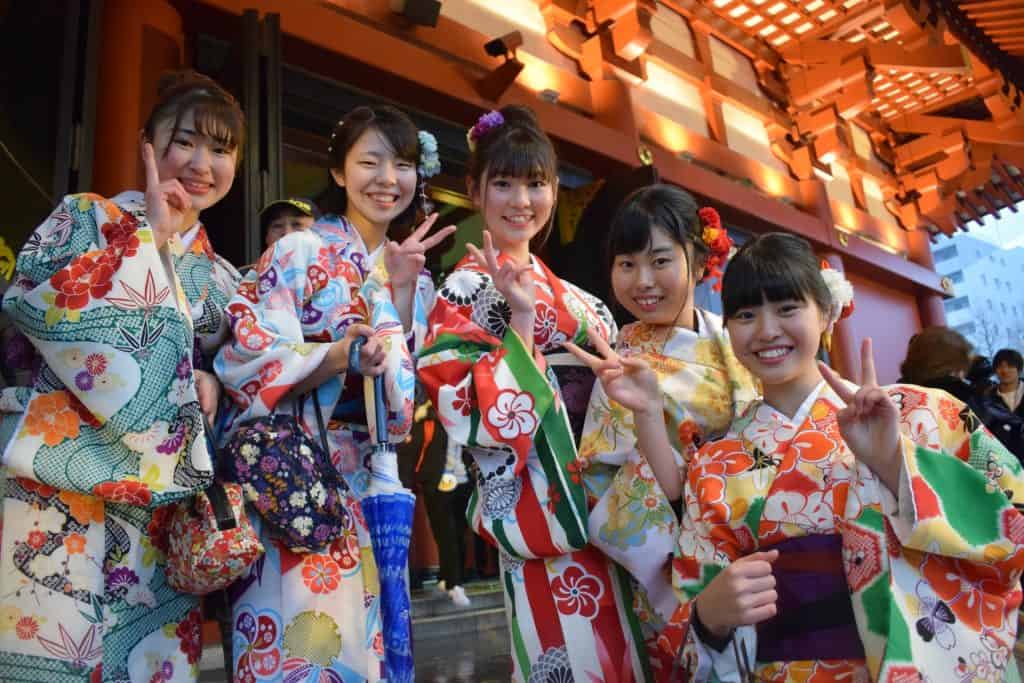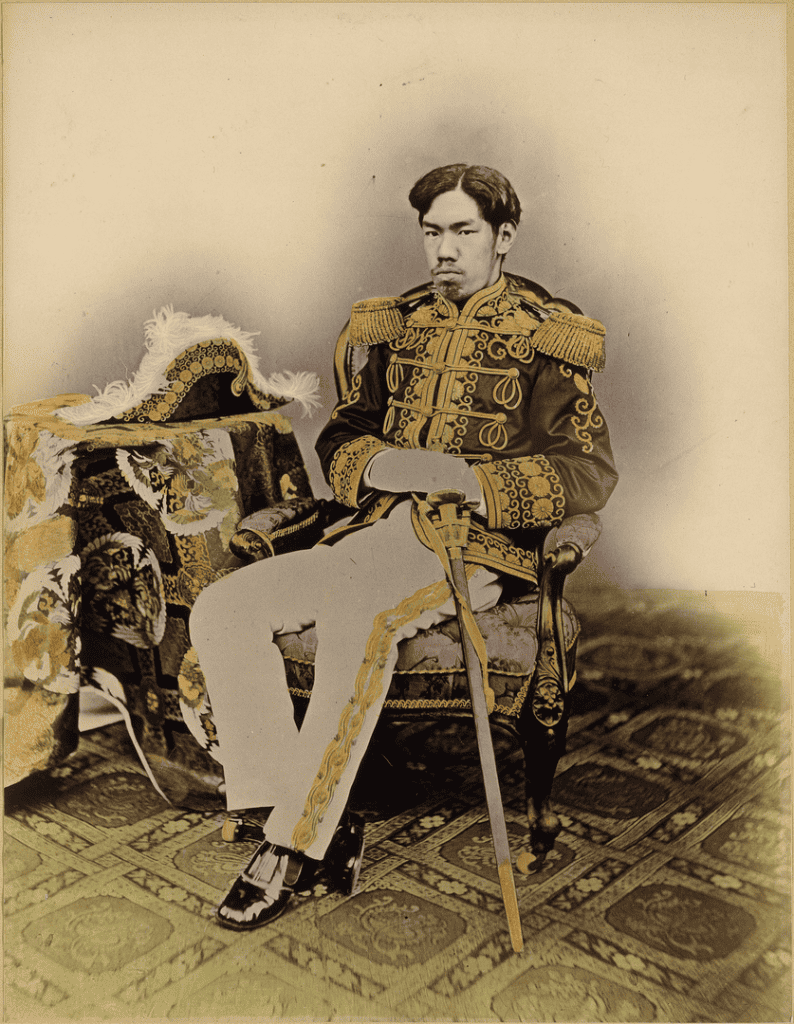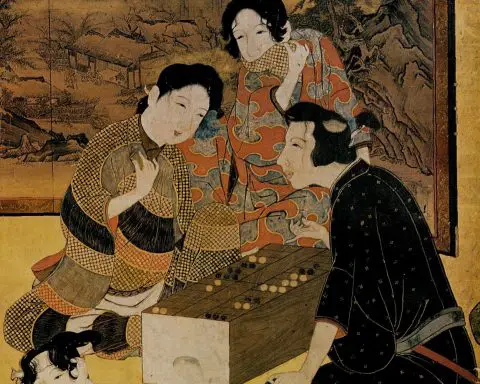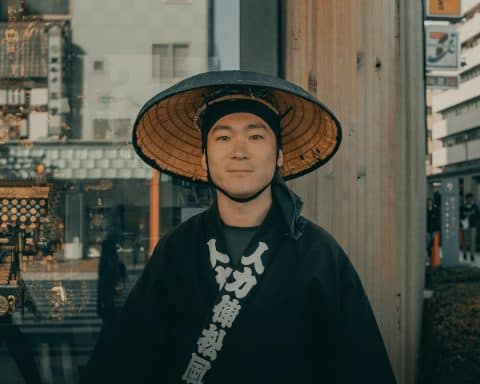If you had to name five things that were quintessentially Japanese, I would hazard a guess that your list would include a Kimono.
I’ve worn one quite a few times, and other than looking absolutely fabulous, it’s a great way to centre yourself in the present moment. Almost as though you’re stepping into another world, and all the worries of the past float away.
However, I was told that I was given a Yukata and not a kimono.
Confused about the differences? Let me help you figure it out!
In short, the main difference between a yukata and a kimono is that a yukata is one of the many types of kimono. It’s worn in the hot and humid months of Japan’s summer, and also commonly worn in a more casual environment compared to other, more formal types of kimono.
Let’s explore these differences in a bit more detail and find out the exact reasons they’re used in modern day Japan.
What is a Kimono?
To truly understand the difference between a Yukata and a Kimono, we need to understand exactly what a kimono is first.
Let’s break the word down:
着 – ki – To Wear
物 – mono – Thing
So, in extremely simple terms, kimono means a “thing to wear”.
Made of four pieces of fabric, the kimono originated from Chinese clothing during the Heian period (794-1185).
Back in those times, the word Kimono was used purely to reference Japanese clothing as a whole. However it now takes on the meaning of “traditional Japanese robes” instead.
What is the difference between a Kimono and Yukata?

Warning: I’m about to say the words “Yukata” and “Kimono” a whole lot, apologies in advance!
The biggest difference between the Kimono and Yukata is their use case.
Whilst, technically, a Yukata is a type of Kimono, a general kimono is still a different piece of clothing.
When would you wear a Yukata?
This is what I wore when I stayed at a ryokan in Hakone.
They’re most commonly worn during extremely hot and humid periods of the year, as well as around the house.
Yukatas are traditional Japanese clothing, but far more casual than any other form of Kimono. For instance if you’re walking around a city, you’re far more likely to see people wearing these than a full on kimono.
If you ever have a chance of going to an omatsuri, a summer festival, the majority of people will be wearing a Yukata. It’s convenient, breezy, traditional and perfectly suited to the environment!

When would you wear a kimono?
These are the stereotypical, traditional Japanese robes you’re probably thinking of.
If we’re talking about the standard kimono, these robes are generally worn on special occasions like birthdays, weddings, funerals, and events, as opposed to everyday, like the Yukata.
Although they are mainly worn by women, it’s still common to see both genders wearing them out and about.
It is, however, extremely common for tourists to rent kimonos for the day in popular spots.
I remember going to Arashiyama for the day to see the bamboo forest (highly recommended!), and there were loads of people, mainly couples that had rented kimonos from some of the many shops in the town.
Materials of a Yukata
Due to their heavy use in the summer months, Yukata’s need to be created with the proper materials to keep the wearer comfortable.
Depending on the quality, Yukata’s are normally made from either cotton or some sort of synthetic material.
I’ve bought myself one from Don Quijote, so it’s probably not the best material in the world but it’s extremely comfortable to wear around the house and in other casual situations.
Materials of a Kimono

Kimono’s, on the other hand, are used almost exclusively for special occasions which means the materials used can be as luxury or aesthetically pleasing as possible, without worrying about comfort as much a Yukata.
Kimonos are traditionally made from hemp, linen or silk. As we are about to see, the material a kimono is made from is one of the biggest reasons for their high price.
The price difference between Kimono and Yukata
Both kimonos and yukatas can cost as little or as much as you want them to.
Pure silk kimono can easily go for over $1,000, and the same can be said for Yukata. I do think that due to their uses in formal events and special occasions that on average, a Japanese kimono will cost more than a yukata.
I assume, like me, that you aren’t made of money which means you’ll be looking for a slightly cheaper alternative.
Japanese department stores, or even second hand stores would likely be your best bet. Prices of around $100 – $200 wouldn’t be uncommon.
Are there other types of Kimono?
Yep, there’s a lot.
1. Furisode (振袖)
The most formal type of kimono, with extremely eye catching and striking designs.
2. Iro Muji (色無地)
Plain kimono with no designs and plain colours. I would suggest these are the minimalist varieties of kimono, extremely similar to the rest of Japan’s minimalist clothing.
3. Hikizuri (引きずり)
Simply known as the “Geisha Kimono”, they’re extremely rare to see unless you’re in the right place at the right time.
Characterised by its trailing skirt, the Hikizuri is a kimono made almost exclusively for the rich.
4. Houmongi (訪問着)
The Houmongi, or “visiting dress” as it translates to in English, is the type of kimono worn for a few different types of ceremonies, house parties, and other semi formal events.
5. Yukata (浴衣)
By far the most casual type of kimono, made of light materials and perfect for casual events, travelling, or chilling out on a Sunday afternoon.
6. Tomesode (留袖)
This is a kimono an extremely formal robe worn by married women. It can be likened to an evening dress in the west.
7. Komon (小紋)
Komon is another type of casual kimono that many people in Japan wear on a daily basis. It has designs across the entire garment which can either be hand or patterned dyed.
8. Wedding Kimono
Originating from samurai society, the wedding kimono is completely white and only ever worn on the wedding day.
How often do Japanese people wear kimonos?
As you can see, there is quite a bit of cross over through all the different kimono types, yet each one still serves a specific purpose.
But how often do people actually wear kimonos in Japan?
In more recent years, the vast majority of people in Japan wear western style clothing. That’s not to say you won’t see people out and about wearing them, because you absolutely will depending on where you visit, but on the whole it makes for a smaller portion of the clothes people wear.
Outside events and special occasions, you’ll find some of the older generation wear kimonos on a daily basis, but it’s not as popular with the younger generation.
Why did the Japanese stop wearing Kimonos?
This is quite a tough question that doesn’t have a straightforward answer. But, I’ll do my best to make it understandable.
The main reason the majority of people stopped wearing kimono in Japan started around the time of the Meiji Restoration.
This was a time of huge political, social, and military change for the country, and it trickled down as far as the clothes warn by specific members of the Japanese government.

Emperor Meiji told his staff not to wear Kimonos while working, and at this time the word ‘Kimono’ pretty much referred to any form of Japanese clothing.
But it wasn’t just government staff that had to adopt western clothing during the Meiji reformation, it was also the entire military that were ordered not to wear kimono to any functions or whilst on duty.
The elites of Japanese society also adopted the practice of wearing western clothes, and once Japan started rebuilding itself after WWII, the majority of society did the same thing.
Of course, the Japanese kimono hasn’t disappeared by any means, and will likely stay forever but just in a different context.
Can I wear a Kimono in Japan or is it disrespectful?
It’s only disrespectful to wear a Japanese kimono in Japan if you’re acting disrespectfully whilst wearing it.
There are many places in Kyoto, Tokyo, and Osaka (and other popular cities) where shops rent out Kimonos to tourists for a small price.
It makes for a great experience and some even greater photos!
So please don’t feel like you’re doing something wrong by wearing a kimono in Japan, it’s a perfectly ok thing to do!
Where can I buy a Japanese Kimono online?
I would recommend going to a shop and trying on your kimono before buying it, but I realize that’s not always possible.
I would suggest the best place to buy a Japanese Kimono or Yukata online is thejapaneseshop. They sell hundreds of them, and for pretty decent prices, too.
Conclusion
So to summarise, Yukata are casual and traditional Japanese robes that are worn more frequently in modern-day Japan. Kimonos are worn almost exclusively on special occasions, but still make an occasional appearance even in the cities.








